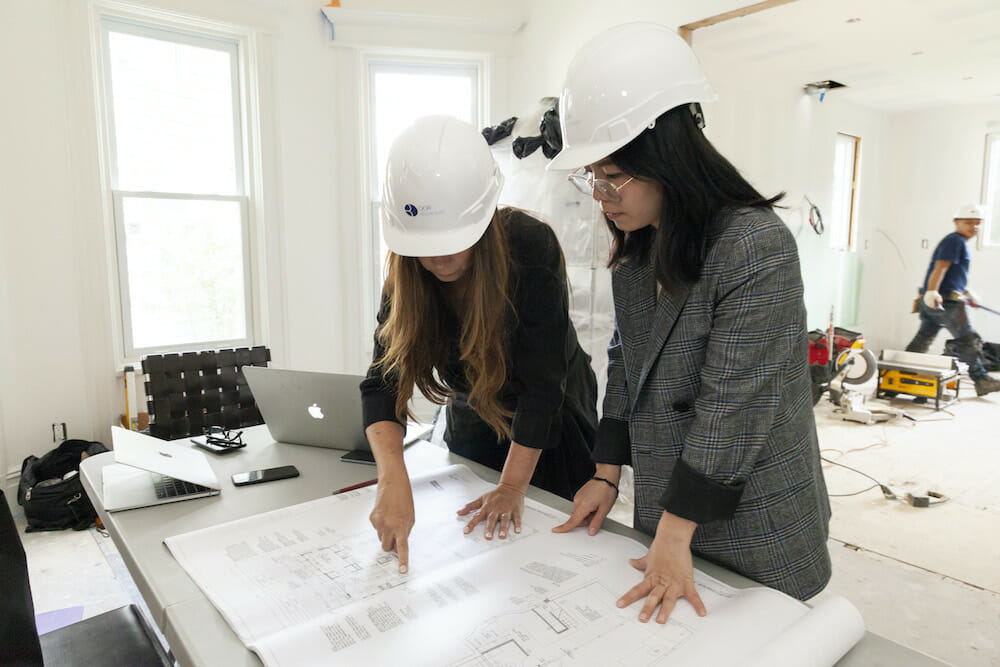Architect Tips for Creating Modern Residential Spaces
Architect Tips for Creating Modern Residential Spaces
Blog Article
Understanding the Diverse Occupation Paths Available for Aspiring Architect
As a hopeful Architect, you have a globe of career courses waiting for you. Whether you're drawn to conventional architecture or the nuances of sustainable style, there's a particular niche that straightens with your interests.
Standard Style: Creating Structures and buildings
Standard style concentrates on making buildings and structures that blend performance with visual charm. As you explore this field, you'll appreciate the complex balance between type and function. You'll discover to draw inspiration from historical styles, including elements like symmetry, products, and workmanship. Your styles can mirror cultural heritage, showcasing neighborhood practices while fulfilling modern-day demands.
You'll establish abilities in preparing, model-making, and site analysis, enabling you to picture and interact your ideas effectively. Involving with clients, you'll need to understand their vision and convert it into possible styles.
Furthermore, developing codes and sustainability techniques are crucial in your work, ensuring your structures are eco pleasant and secure. As you grow in your career, you'll locate chances in household, business, or perhaps remediation tasks, each offering special challenges. Welcoming conventional architecture leads the way for a satisfying career that admires the past while shaping the future.
Urban Preparation: Shaping Areas and Public Spaces
As an ambitious Architect, you can play an important duty as a metropolitan coordinator, transforming just how communities communicate and function. By utilizing area interaction techniques, you'll guarantee that homeowners have a voice fit their atmosphere. And also, incorporating sustainable layout concepts will assist produce spaces that not only fulfill today's needs however also shield the future.
Role of Urban Planners
While lots of may believe of designers as the single enthusiasts behind buildings, urban planners play a necessary duty in forming the wider landscape of communities and public rooms. By teaming up with various stakeholders, you'll aid create parks, transportation systems, and domestic locations that promote social communication and access. Your expertise in spatial layout and area dynamics permits you to envision future development while protecting cultural heritage.
Neighborhood Involvement Techniques
Efficient area interaction methods are essential for city planners to ensure that the voices of citizens are listened to and valued in the preparation procedure. To foster purposeful dialogue, you should prioritize open forums and workshops where community participants can express their ideas and concerns. By actively listening and including responses, you'll develop rooms that show the neighborhood's requirements, eventually leading to more successful and sustainable metropolitan atmospheres.
Sustainable Style Concepts
When designing city rooms, including sustainable layout concepts is essential for developing atmospheres that thrive both environmentally and socially. Think about integrating eco-friendly spaces, like gardens and parks, to boost biodiversity and boost air top quality.
Designing with water preservation in mind is likewise key-- believe regarding rainfall gardens and absorptive surfaces to take care of stormwater. Involving area members during the preparation process assurances that the spaces you produce fulfill their needs and urge social communication. By embracing these principles, you'll contribute to vibrant, lasting urban landscapes that benefit everyone.

Landscape Design: Developing Sustainable Exterior Atmospheres
As you check out landscape architecture, you'll find vital design principles that produce practical and attractive exterior rooms. Sustainable techniques play an important function in making sure these environments thrive while decreasing environmental impact. Plus, you'll find a variety of career opportunities that permit you to make a genuine difference in just how individuals engage with nature.
Style Principles in Landscape
Recognizing design principles in landscape style is important for developing lasting exterior environments that harmonize with nature. You'll require to ponder aspects like percentage, equilibrium, and scale to ensure your layouts really feel natural and welcoming. Incorporating native plants not just enhances biodiversity however additionally decreases water use, making your landscape resilient. Think of the circulation of space and how individuals interact with it; paths and seating areas should invite exploration and leisure. Additionally, take notice of seasonal changes, creating with products that match the surroundings year-round (Architect). By focusing on sustainability and appearances, you can develop outdoor rooms that enhance the community and advertise wellness. Welcoming these principles will certainly set a solid structure for your profession in landscape design.
Sustainable Practices Introduction
Lasting techniques in landscape style not just focus on looks but additionally prioritize environmental health and resource preservation. By incorporating native plants, you boost biodiversity and lower the need for chemical fertilizers and pesticides. Carrying out reliable irrigation systems assists preserve water and lessens drainage, securing nearby ecosystems. You can design areas that promote dirt health, such as exercising and making use of organic materials permaculture concepts. Additionally, integrating eco-friendly infrastructure, like rainfall gardens and porous pavements, help in stormwater management and lowers city warm. You contribute to a much healthier earth and provide rooms that promote community link when you create outside atmospheres with sustainability in mind. Ultimately, these techniques ensure your layouts profit both individuals and the environment for many years ahead.
Career Opportunities Expedition
With a solid foundation in lasting practices, landscape design uses a variety of job paths that allow you to make a meaningful impact on the setting. Urban coordinators often team up with landscape engineers to develop environment-friendly spaces in metropolitan settings, enhancing city livability. If you're passionate concerning education, take into consideration becoming a landscape design educator, inspiring future generations.
Lasting Style: Concentrating On Eco-Friendly Practices
As you discover your job in architecture, accepting environment-friendly techniques can establish you apart in a competitive field. Sustainable style focuses on creating structures that decrease ecological impact while enhancing occupant health. By including eco-friendly materials, energy-efficient systems, and lasting building methods, you'll contribute to a greener future.
Begin by acquiring understanding of green certifications like LEED or BREEAM, which can reinforce your credentials. Consider exactly how all-natural light, air flow, and thermal effectiveness can maximize style. Collaborate with designers and ecological experts to innovate options that minimize waste and preserve sources.
Don't neglect the value of community involvement-- interesting local stakeholders can inspire styles that harmonize with the setting. As customers increasingly prioritize sustainability, your proficiency in environment-friendly techniques will certainly not only attract projects however also meet your passion for accountable architecture. Welcome this essential aspect of the profession, and see your job prosper.
Historic Conservation: Securing and Restoring Social Heritage
While you start on your architectural journey, take into consideration the necessary function of historic preservation in keeping our social heritage. This area concentrates on the defense and remediation of significant buildings, sites, and structures that inform the tales of our past. click here to read By participating in historic preservation, you'll assist guard the architectural tradition that shapes neighborhood identification.
As a historic conservation Architect, you'll examine historic value and assess the condition of structures. You'll function closely with historians and guardians to assure authentic restoration strategies are used. This career course permits you to mix imagination with research, allowing you to create services that value original products and craftsmanship.
Your job not just adds to sustainability by recycling existing structures yet additionally promotes a feeling of satisfaction within neighborhoods. Welcoming this course will certainly help you come to be a guardian of background, preserving the stories and appearances that enrich our lives.
Inside Architecture: Enhancing Indoor Spaces
Historical conservation and indoor style both share a dedication to enhancing the constructed environment, but they focus on various aspects. While historical conservation emphasizes keeping a framework's historic and cultural value, indoor style zeroes in on optimizing indoor rooms for functionality and aesthetic appeals.
As an aspiring Architect, you'll locate that indoor style allows you to mix imagination with technological skills. You'll create rooms that not only look excellent however additionally promote convenience and effectiveness. This field includes understanding how light, shade, and products interact within an area, influencing state of mind and use.
You'll deal with numerous projects, from domestic homes to business workplaces, making certain that each setting satisfies the needs of its passengers. By prioritizing individual experience, you can change insides into practical and motivating spaces, making a substantial effect on just how people communicate with their surroundings. Welcome the chance to improve interior atmospheres and form the method individuals function and live.
Industrial Style: Combining Performance With Looks
Commercial style plays an important role in developing products that seamlessly blend aesthetics with functionality, ensuring that what you make use of daily is not only aesthetically enticing yet additionally practical. As a hopeful Architect, you might involve on your own in this field, concentrating on designing every little thing from furniture to consumer electronics. Your job involves comprehending customer demands, materials, and making processes, enabling you to develop cutting-edge remedies that improve day-to-day experiences.
In industrial layout, you'll frequently team up with designers, marketers, and producers, ensuring that your styles are not just stunning however likewise possible. You'll find out to balance kind and function, focusing on use without sacrificing style. By sharpening your skills in laying out, 3D modeling, and prototyping, you'll be fully equipped to bring your ideas to life. This career path provides a vibrant setting where creative thinking fulfills practicality, making it a satisfying selection for architects interested in shaping the products of tomorrow.
Frequently Asked Inquiries
What Educational Certifications Do I Need to Come To Be an Architect?
To end up being a designer, you'll need a specialist level in architecture, typically a Bachelor's or Master's. Additionally, you'll have to finish an internship and pass the Architect Registration Examination to exercise legally.
Are There Certification Needs for Various Building Occupation Paths?
Yes, there're accreditation requirements for different building paths. Architect. You'll need to pass examinations, total teaching fellowships, and occasionally pursue specialized training, depending upon your chosen focus, like landscape design, metropolitan style, or historical preservation
What Software Program Abilities Are Essential for Engineers Today?

How Can I Gain Practical Experience While Examining Design?
You can get functional experience by interning at building firms, taking part in design competitions, offering for area jobs, or collaborating with schoolmates on real-world jobs. These possibilities enhance your skills and build useful links in the market.
What Job Opportunities Exist Outside Typical Design Firms?
You can check out different task possibilities outside conventional browse around here design companies, like urban planning, interior decoration, landscape design, building and construction management, genuine estate growth, and even functions in sustainability consulting. Each deals one-of-a-kind difficulties and incentives.
Whether you're attracted to standard design or the nuances of lasting layout, there's a specific niche that lines up with your passions.When making urban spaces, integrating lasting layout concepts is important for creating settings that prosper both environmentally and socially.As you discover landscape style, you'll discover essential layout principles that create practical and lovely exterior rooms.Understanding style concepts in landscape architecture is important for producing sustainable outdoor settings that harmonize with nature.In industrial style, you'll commonly work together with engineers, marketing professionals, and producers, ensuring that your layouts are not only stunning but also viable.
Report this page